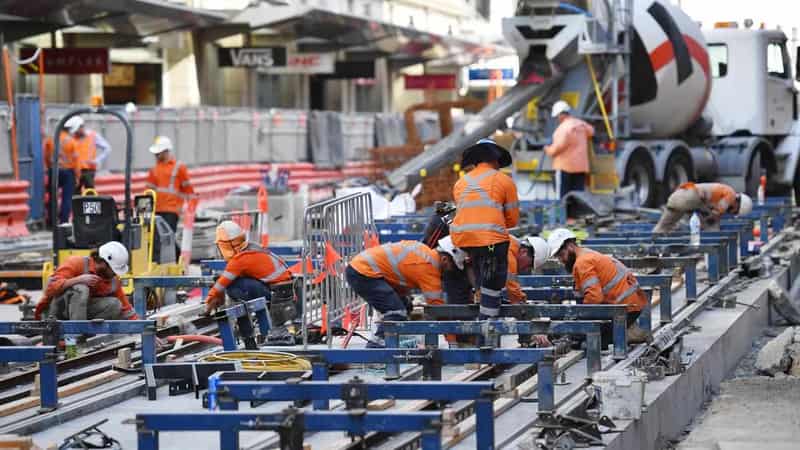
Australian employers are still hiring but the size of the workforce is growing faster than the number of jobs being created, in a development that bodes well for borrowers waiting for interest rate cuts.
The unemployment rate rose to 4.1 per cent in April, the Australian Bureau of Statistics said on Thursday, up from the revised-higher figure of 3.9 per cent in March.
The figure was a little above expectations for a 3.9 per cent outcome and yet job creation was stronger than expected, with employment rising by 38,500 jobs after a 5900 drop in the month prior.
CommSec economists Ryan Felsman and Craig James said growth in the workforce was outpacing job creation, which was still happening faster than expected.
They said the jobless rate of 4.1 per cent was a "good news story" in the context of a central bank trying to bring prices to heel while holding onto its "very real achievement of securing full employment".
Strong population growth and people re-entering the workforce was adding to labour supply, and helping keep wages growing at a pace consistent with taming inflation, the CommSec economists said.
In a sign of cautious hiring in a sluggish economy, the April figures showed part-time employment rising 44,600, while full-time jobs fell 6100.
ANZ head of Australian Economics Adam Boyton said the preference for part-time hires, an unemployment rate drifting higher, weakness in hours worked, and moderating wages growth was confirmation of a softening labour market.
Yet he warned the jump in unemployed people in April in part reflected more people than usual waiting to start a new job.
Next month's numbers could show the unemployment rate moving down again as those workers get started in their new gigs.
Treasurer Jim Chalmers said the government had overseen the creation of 820,000 new jobs, more than any other first-term government, but acknowledged cracks were starting to appear in the jobs market.
"It shows again what’s been clear for some time now that a weaker global and domestic economy and the rate rises already in the system are having an impact," he said.
Shadow Treasurer Angus Taylor said the rise in the unemployment rate was alarming and Tuesday's federal budget showed the government had no plan to improve living standards.
“We needed a budget that restored our standard of living by addressing inflation and cost-of-living pressures, restored prosperity and created opportunity by supporting small businesses and enhancing incentives to work, and restored budget discipline and honesty,” he said.









